#textile exhibition india
Explore tagged Tumblr posts
Text
Gartex Texprocess India 2023: India's Premier Textile Expo
Unveil your innovations at India's premier Textile Expo, Gartex Texprocess India 2023. Seize vast business opportunities in Garment Machinery and Textile Manufacturing. Book your stall now for unparalleled exposure!
#textile expo#garment exhibition#textile fairs india#upcoming textile fair in india#garment exhibition in mumbai#upcoming garment exhibition in india#textile exhibition india#Digital textile#garment fair in delhi#textile exhibition delhi#textile exhibition mumbai#Washing Technology#Garment textile exhibition#fabrication show
0 notes
Text
#rimtex industrious#spinning cans#sliver cans#spinning industry#textile industry#hdpe sliver cans#SIMA Texfair 2024#Texfair 2024#SIMA Texfair#coimbatore#India#textile exhibition
0 notes
Text

Global Textile Trade Fair is one of the best international trade fairs taking place in May 2023. If you are a textile designer, this is a fantastic opportunity to showcase your work and expand your business in the best way possible. Join this Trade Fair International today for the best trade fair experience. Register now.
0 notes
Text
Expobazaar at HGH India 2023: Empowering Businesses Beyond Face to Face
Join Expobazaar at HGH India 2023 for an empowering business experience beyond face-to-face interactions. Explore innovative solutions, network with industry leaders, and discover new opportunities for growth. Don't miss out on this exciting event!
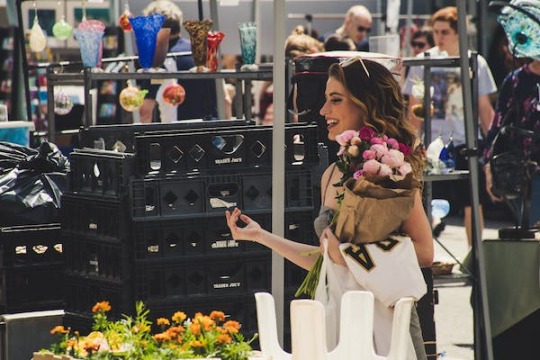
#Bombay#HGH fair#home & textiles#home decor#home products#Home textiles & decor#India Expo Mart#texzone#B2B e-commerce#bombay exhibition centre#brands and manufacturers#buyers and interior designers#decorative accessories#décor home furniture houseware#décor houseware and gifts#greater noida#hgh india#home textiles home decor#houseware and gifts#india 2022#indian brands and manufacturers#institutional buyers#institutional buyers and interior#retailers distributors trade buyers#show for home textiles#textiles home decor houseware#trade show for home#world class#hgh 2023#hgh exhibition 2023
0 notes
Link
#the x axis india#The X- Axis#ITMA 2023#ITMA Milan#ITMA Italy#textile industry#textile exhibition#Textile Spinning Rings#ring travellers
0 notes
Text
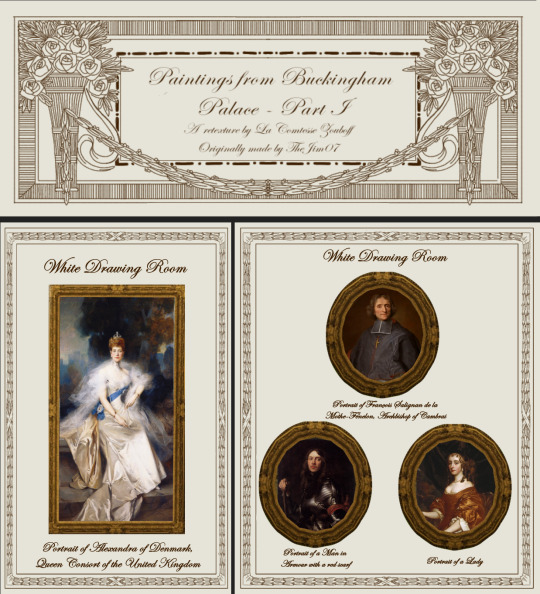
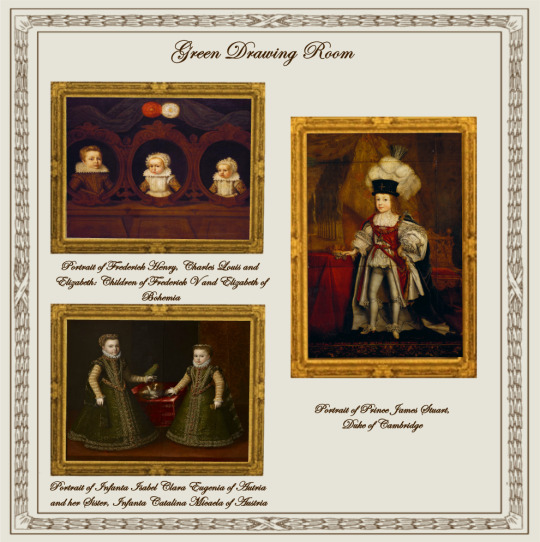
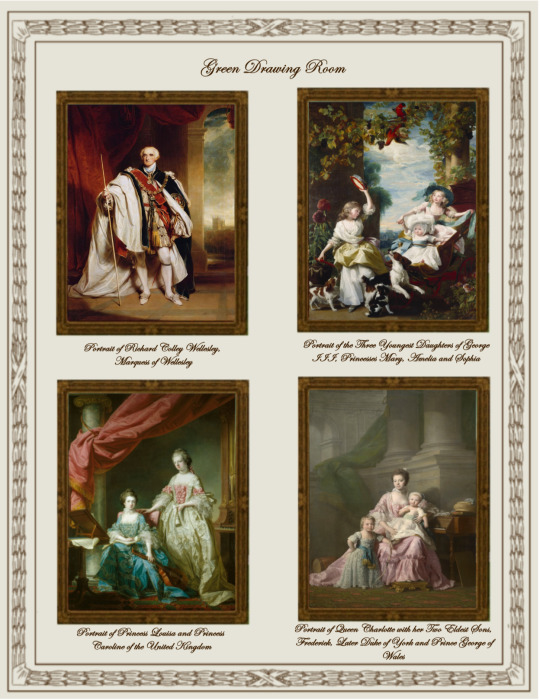
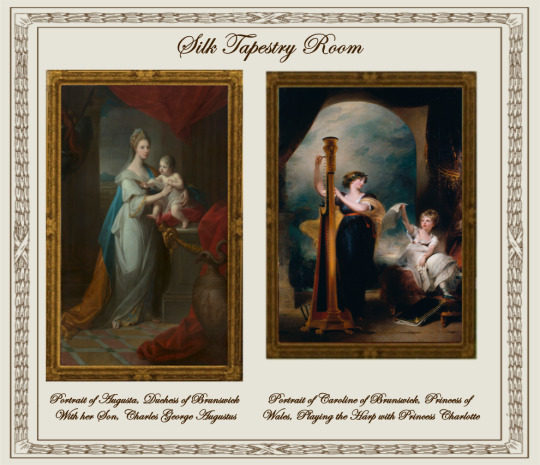

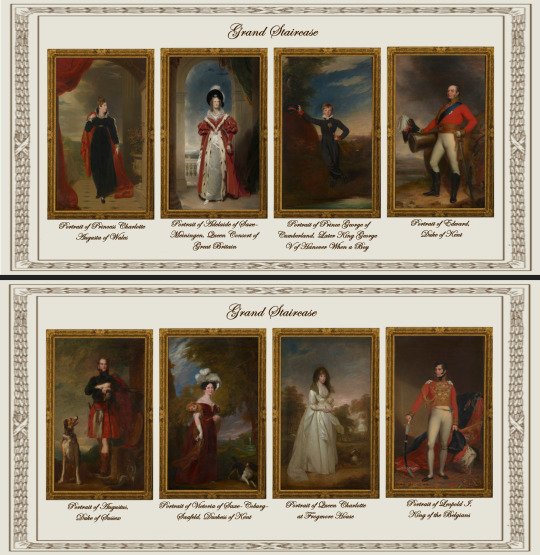
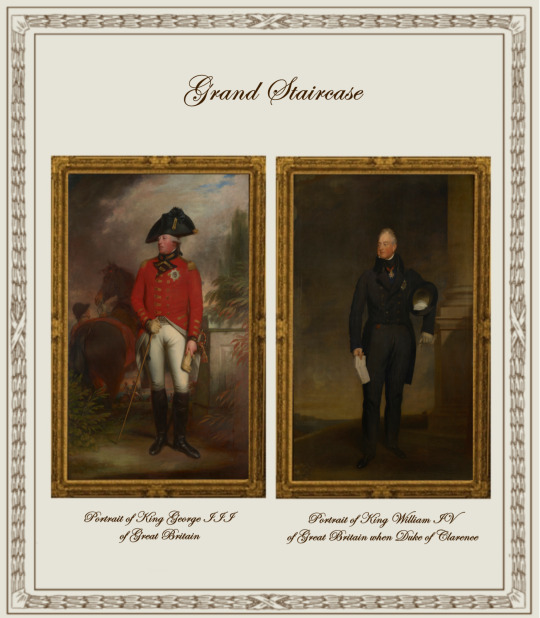
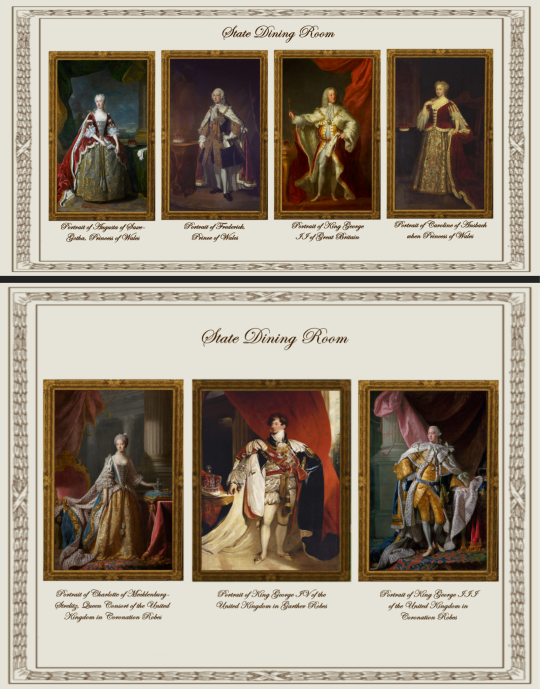
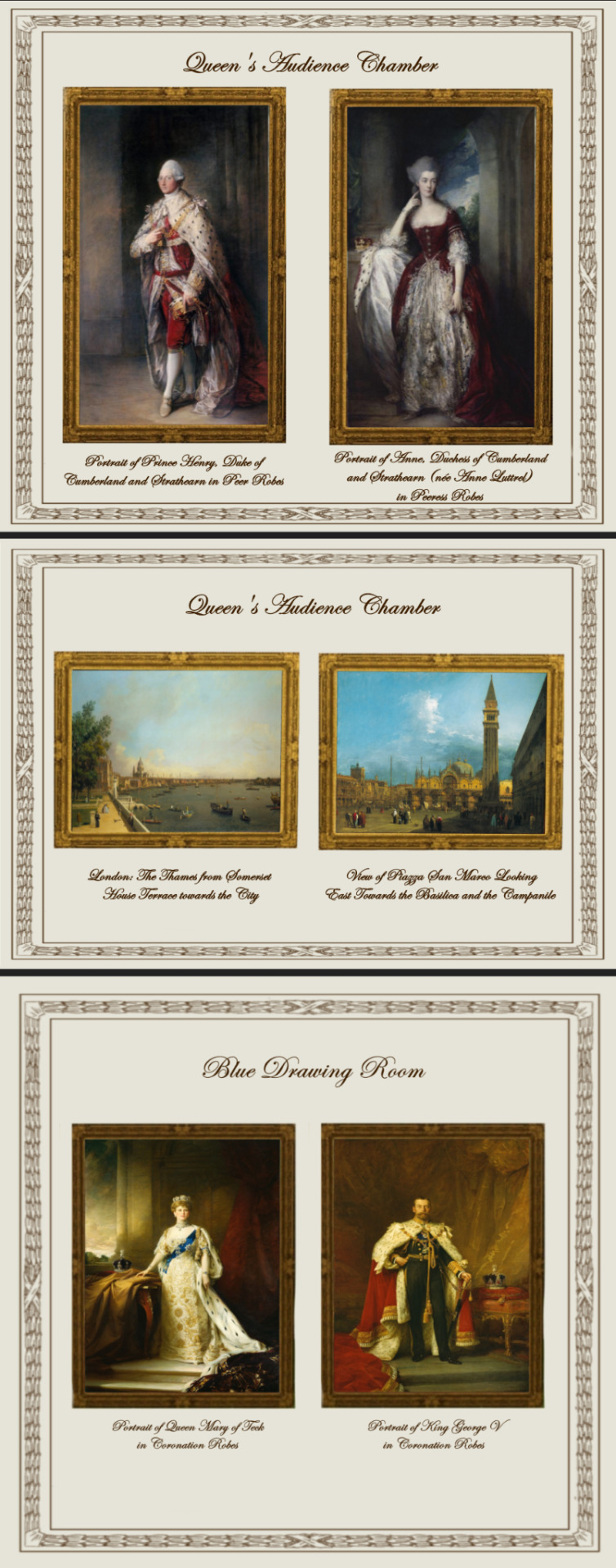
Paintings from Buckingham Palace: part I
A retexture by La Comtesse Zouboff — Original Mesh by @thejim07
100 followers gift!
First of all, I would like to thank you all for this amazing year! It's been a pleasure meeting you all and I'm beyond thankful for your support.
Spread among 13 occupied and historic royal residences in the United Kingdom, the collection is owned by King Charles III and overseen by the Royal Collection Trust. The British monarch owns some of the collection in right of the Crown and some as a private individual. It is made up of over one million objects, including 7,000 paintings, over 150,000 works on paper, this including 30,000 watercolours and drawings, and about 450,000 photographs, as well as around 700,000 works of art, including tapestries, furniture, ceramics, textiles, carriages, weapons, armour, jewellery, clocks, musical instruments, tableware, plants, manuscripts, books, and sculptures.
Some of the buildings which house the collection, such as Hampton Court Palace, are open to the public and not lived in by the Royal Family, whilst others, such as Windsor Castle, Kensington Palace and the most remarkable of them, Buckingham Palace are both residences and open to the public.
About 3,000 objects are on loan to museums throughout the world, and many others are lent on a temporary basis to exhibitions.
-------------------------------------------------------
This first part includes the paintings displayed in the White Drawing Room, the Green Drawing Room, the Silk Tapestry Room, the Guard Chamber, the Grand Staircase, the State Dining Room, the Queen's Audience Room and the Blue Drawing Room,
This set contains 37 paintings and tapestries with the original frame swatches, fully recolourable. They are:
White Drawing Room (WDR):
Portrait of François Salignan de la Mothe-Fénelon, Archbishop of Cambrai (Joseph Vivien)
Portrait of a Lady (Sir Peter Lely)
Portrait of a Man in Armour with a red scarf (Anthony van Dyck)
Portrait of Alexandra of Denmark, Queen Consort of the United Kingdom and Empress of India (François Flameng)
Green Drawing Room (GDR):
Portrait of Prince James Stuart, Duke of Cambridge (John Michael Wright)
Portrait of Frederick Henry, Charles Louis and Elizabeth: Children of Frederick V and Elizabeth of Bohemia (unknown)
Portrait of Infanta Isabel Clara Eugenia of Autria and her Sister, Infanta Catalina Micaela of Austria (Alonso Sanchez Coello)
Portrait of Princess Louisa and Princess Caroline of the United Kingdom (Francis Cotes)
Portrait of Queen Charlotte with her Two Eldest Sons, Frederick, Later Duke of York and Prince George of Wales (Allan Ramsay)
Portrait of Richard Colley Wellesley, Marquess of Wellesley (Martin Archer Shee)
Portrait of the Three Youngest Daughters of George III, Princesses Mary, Amelia and Sophia (John Singleton Copley)
Silk Tapestry Room (STR):
Portrait of Caroline of Brunswick, Princess of Wales, Playing the Harp with Princess Charlotte (Sir Thomas Lawrence)
Portrait of Augusta, Duchess of Brunswick With her Son, Charles George Augustus (Angelica Kauffmann)
Guard Chamber (GC):
Les Portières des Dieux: Bacchus (Manufacture Royale des Gobelins)
Les Portières des Dieux: Venus (Manufacture Royale des Gobelins)
Les Portières des Dieux (Manufacture Royale des Gobelins)
Grand Staircarse (GS):
Portrait of Adelaide of Saxe-Meiningen, Queen Consort of Great Britain (Martin Archer Shee)
Portrait of Augustus, Duke of Sussex (Sir David Wilkie)
Portrait of Edward, Duke of Kent (George Dawe)
Portrait of King George III of Great Britain (Sir William Beechey)
Portrait of King William IV of Great Britain when Duke of Clarence (Sir Thomas Lawrence)
Portrait of Leopold I, King of the Belgians (William Corden the Younger)
Portrait of Prince George of Cumberland, Later King George V of Hanover When a Boy (Sir Thomas Lawrence)
Portrait of Princess Charlotte Augusta of Wales (George Dawe)
Portrait of Queen Charlotte at Frogmore House (Sir William Beechey)
Portrait of Victoria of Saxe-Coburg-Saafeld, Duchess of Kent (Sir George Hayter)
State Dining Room (SDR):
Portrait of Charlotte of Mecklenburg-Strelitz, Queen Consort of the United Kingdom in Coronation Robes (Allan Ramsay)
Portrait of King George III of the United Kingdom in Coronation Robes (Allan Ramsay)
Portrait of Augusta of Saxe-Gotha, Princess of Wales (Jean-Baptiste Van Loo)
Portrait of Caroline of Ansbach when Princess of Wales (Sir Godfrey Kneller)
Portrait of Frederick, Princes of Wales (Jean-Baptiste Van Loo)
Portrait of King George II of Great Britain (John Shackleton)
Portrait of King George IV of the United Kingdom in Garther Robes (Sir Thomas Lawrence)
Queen's Audience Room (QAR):
Portrait of Anne, Duchess of Cumberland and Strathearn (née Anne Luttrel) in Peeress Robes (Sir Thomas Gainsborough)
Portrait of Prince Henry, Duke of Cumberland and Strathearn in Peer Robes (Sir Thomas Gainsborough)
London: The Thames from Somerset House Terrace towards the City (Giovanni Antonio Canal "Canaletto")
View of Piazza San Marco Looking East Towards the Basilica and the Campanile (Giovanni Antonio Canal "Canaletto")
Blue Drawing Room (BDR)
Portrait of King George V in Coronation Robes (Sir Samuel Luke Fildes)
Portrait of Queen Mary of Teck in Coronation Robes (Sir William Samuel Henry Llewellyn)
-------------------------------------------------------
Found under decor > paintings for:
500§ (WDR: 1,2 & 3)
1850§ (GDR: 1)
1960§ (GDR: 2 & 3 |QAR 3 & 4)
3040§ (STR, 1 |GC: 1 & 2|SDR: 1 & 2)
3050§ (GC:1 |GS: all 10|WDR: 4 |SDR: 3,4,5 & 6)
3560§ (QAR: 1 & 2|STR: 2)
3900§ (SDR: 7| BDR: 1 & 2|GDR: 4,5,6 & 7)
Retextured from:
"Saint Mary Magdalene" (WDR: 1,2 & 3) found here .
"The virgin of the Rosary" (GDR: 1) found here .
"The Four Cardinal Virtues" (GDR: 2&3|QAR 3 & 4) found here.
"Mariana of Austria in Prayer" (STR, 1, GC: 1 & 2|SDR: 1 & 2) found here.
"Portrait of Philip IV with a lion at his feet" (GC:1 |GS: all 10|WDR: 4 |SDR: 3,4,5 & 6) found here
"Length Portrait of Mrs.D" (QAR: 1 & 2|STR: 2) found here
"Portrait of Maria Theresa of Austria and her Son, le Grand Dauphin" (SDR: 7| BDR: 1 & 2|GDR: 4,5,6 & 7) found here
(you can just search for "Buckingham Palace" using the catalog search mod to find the entire set much easier!)
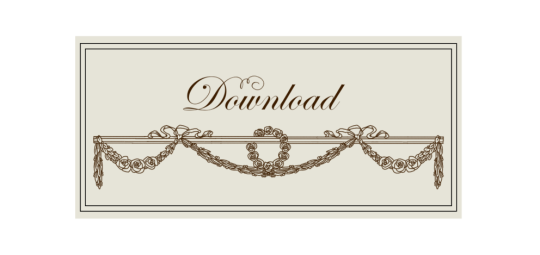
Drive
(Sims3pack | Package)
(Useful tags below)
@joojconverts @ts3history @ts3historicalccfinds @deniisu-sims @katsujiiccfinds @gifappels-stuff
-------------------------------------------------------
#the sims 3#ts3#s3cc#sims 3#sims 3 cc#sims 3 download#sims 3 decor#edwardian#rococo#baroque#renaissance#buckingham#buckingham palace#royal collection trust#wall decor
132 notes
·
View notes
Text


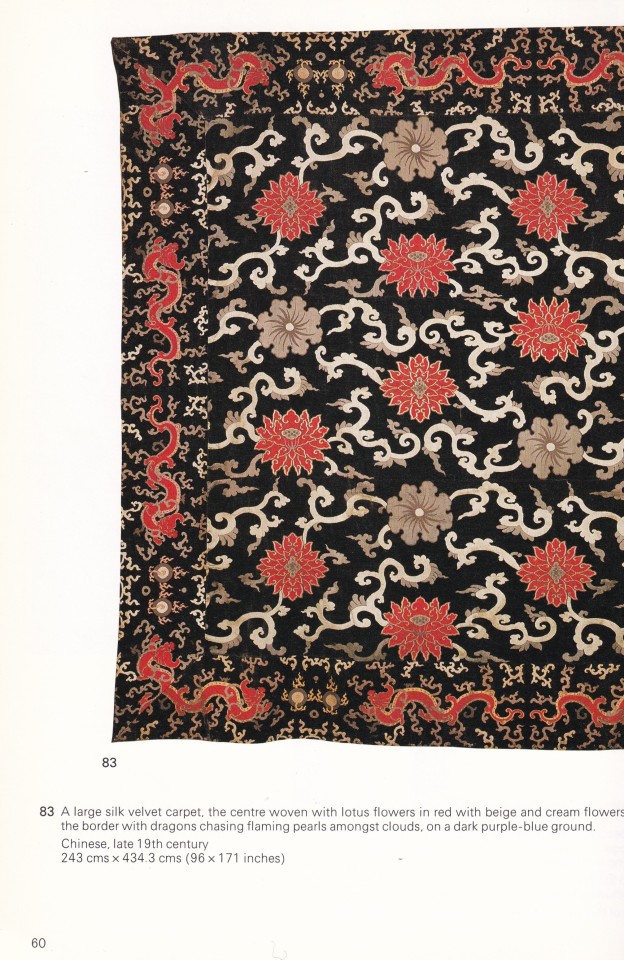


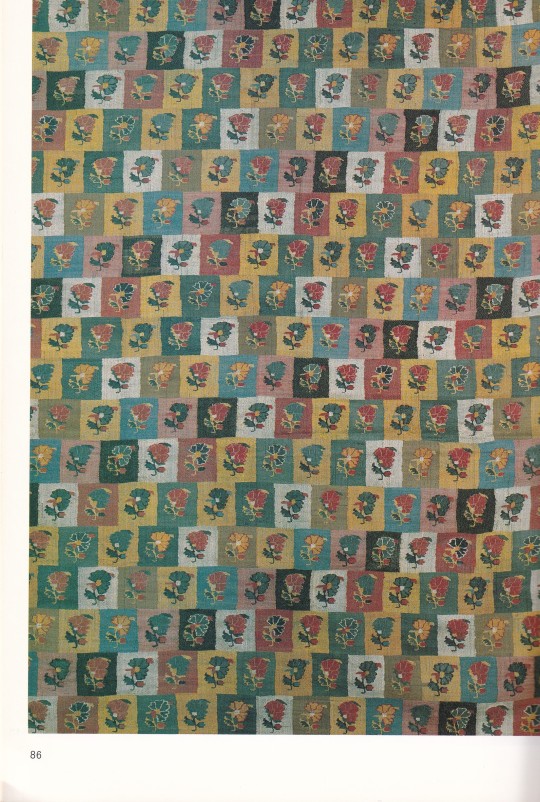
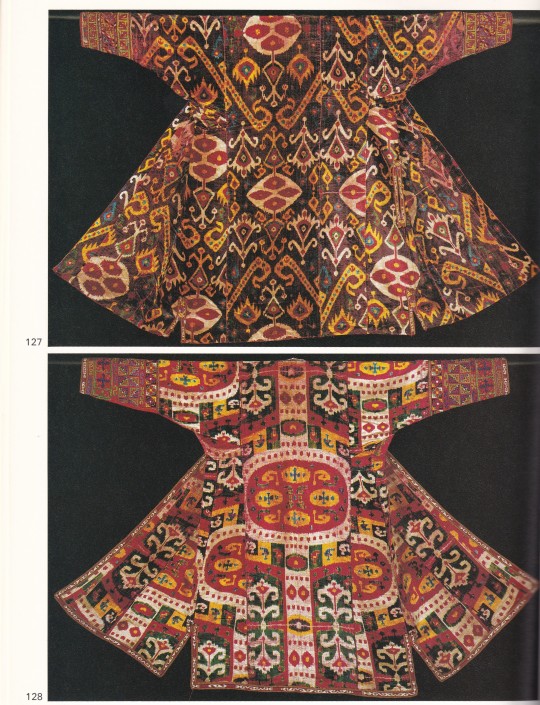
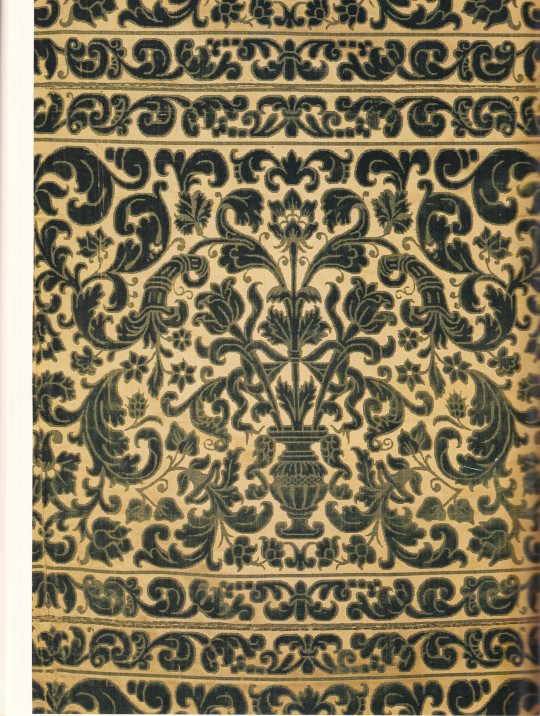
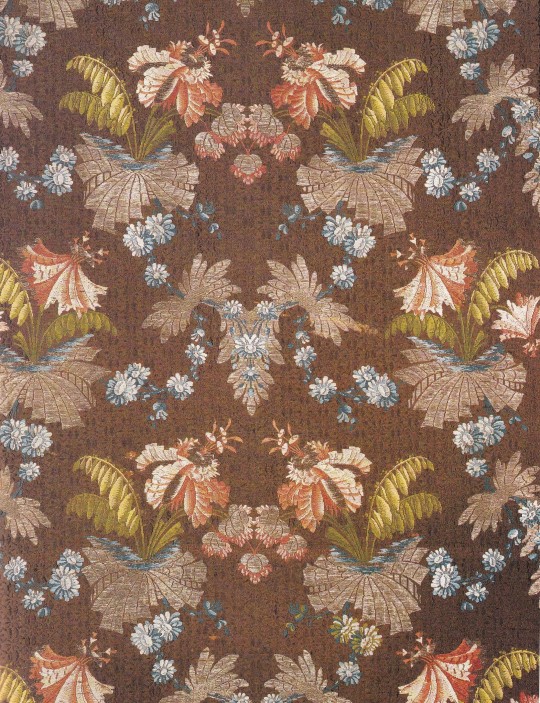



The Art of Textiles
Spink & Son, London 1989, 167 pages, 21x29 cm, paperback
An exhibition for sale Spink & Son Ltd at St James's, London, SW1Y 6QS December 1989
euro 30,00
email if you want to buy [email protected]
Textiles from China, India, Turkey, Europe
Japanese and Chinese Textiles 10th-19th century
Chinese Textiles for Export 17th-18th century
Indian Court and Export Textiles
Islamic Textiles 7th-19th century
Costumes from Uzbekistan and Chinese Turkestan
European Textiles and Ecclesiastical Vestments
Silk and Velvet from Spain,France and Italy
English Figured Silk,Velvet and Chimoiserie Embroidery
19th and 20th century European Woven,Embroidered and painted textiles
09/02/24
16 notes
·
View notes
Text




"Beginning in the 16th century, the golden age of European navigation created a vigorous textile trade, and a breathtaking variety of textile designs subsequently spread across the globe. Trade textiles blended the traditional designs, skills, and tastes of their cultures of origin, with new techniques learned through global exchange, creating beautiful new works that are also historically fascinating. From the elaborate dyed and painted cotton goods of India to the sumptuous silks of Japan, China, Turkey, and Iran, the paths of influence are traced westward to Europe and the Americas.” (From Publisher’s website)
Examples shown in this post are:
1. Samples of printed cottons (Indianilas) from Mexico, detail, 1793
2. Buddhist vestment (Kesa) from the 18th century Japan using textile from China for the European market, detail
3. Bedcover or hanging from India (Gujarat) made with silk satin and embroidery with silk for the Portuguese market, detail, 17th century
Interwoven globe : the worldwide textile trade, 1500-1800 Edited by Amelia Peck ; with contributions by Amy Bogansky ... [et al.]. New York : Metropolitan Museum of Art ; New Haven : distributed by Yale University Press, 2013. Published in conjunction with an exhibition held at The Metropolitan Museum of Art, New York, Sept. 16, 2013-Jan. 5, 2014. HOLLIS number: 990137795200203941
#Textile#HarvardFineArtsLibrary#Fineartslibrary#Harvard#HarvardLibrary#TextileTuesday#NationalThreadTheNeedleDay
46 notes
·
View notes
Text
A Global Celebration of Heritage and Excellence for Rising rajasthan 2024

Rajasthan, a land of majestic palaces, vibrant culture, and timeless traditions, has long been a beacon of India’s rich history and diverse heritage. But in 2024, the state took its global spotlight to new heights with Rising Rajasthan 2024, a grand event that beautifully intertwined the old and the new — celebrating Rajasthan’s heritage while showcasing its ambitions for the future.
Held in Jaipur, the event marked a defining moment in the state’s journey towards becoming a global hub for investment, culture, and innovation. With the theme of “Heritage and Excellence,” Rising Rajasthan 2024 was not just an exhibition; it was a global celebration that brought together policymakers, business leaders, artists, educators, and cultural ambassadors from across the world to explore opportunities for mutual growth and cross-border collaboration.
A Vision of Rajasthan’s Future Rooted in Tradition
Dr. Rajvardhan Rathore, the State Minister for Sports and Youth Affairs, played a central role in organizing and leading the event. A champion of both tradition and progress, Dr. Rathore’s leadership was evident in the event’s execution, where Rajasthan’s historical treasures were celebrated alongside its futuristic ambitions. Through Rising Rajasthan 2024, he sought to reinforce the message that while Rajasthan cherishes its heritage, it is equally committed to embracing new technologies, sustainability, and global partnerships.
The event opened with a grand inauguration ceremony that blended the old-world charm of Rajasthan with cutting-edge technology. Traditional Rajasthani music and dance performances, adorned in royal costumes, set the stage, followed by a digital showcase highlighting Rajasthan’s development in sectors such as infrastructure, renewable energy, education, and tourism. The juxtaposition of culture and innovation painted a powerful picture of a state that honors its past while confidently advancing toward a brighter future.
Celebrating Rajasthan’s Rich Heritage
Rajasthan’s rich cultural heritage was at the heart of Rising Rajasthan 2024. Known for its royal palaces, fortresses, handicrafts, and vibrant festivals, Rajasthan is a state that continues to captivate the world with its color, history, and art. The event’s focus on heritage celebrated these cultural treasures in a way that showcased their global relevance today.
One of the most captivating highlights was the curated “Rajasthan Heritage Pavilion,” which featured an extensive display of traditional arts and crafts, including the world-famous block printing, blue pottery, tie-and-dye textiles, and intricate jewelry. Visitors from across the globe were able to engage with local artisans, learn about the centuries-old techniques passed down through generations, and appreciate the deep cultural significance behind each creation.
In addition to crafts, Rajasthan’s architectural marvels were given due recognition. A series of digital installations highlighted the state’s iconic landmarks, such as the Amber Fort, City Palace, and the Jantar Mantar, all while promoting the preservation of heritage through sustainable tourism practices.
Global Conversations on Innovation and Excellence
While Rajasthan’s heritage was a central theme, the event also brought a powerful emphasis on excellence and innovation. Rising Rajasthan 2024 served as a platform for global dialogues on the future of technology, sustainability, education, and business.
Among the prominent sessions were panel discussions featuring experts from industries like renewable energy, smart cities, digital transformation, and urban planning. These discussions focused on how Rajasthan could build on its traditional strengths — such as craftsmanship and tourism — while embracing new technologies in sectors like clean energy, artificial intelligence, and digital innovation.
Key speakers from international organizations, such as the United Nations, World Bank, and global companies, spoke about how Rajasthan could become a model for sustainable development. Dr. Rathore highlighted in his address, “The key to Rajasthan’s success lies in leveraging its heritage as a catalyst for innovation. By preserving our traditions and simultaneously embracing the technologies of tomorrow, we can create a sustainable, prosperous future for all.”
Cultural Diplomacy: Rajasthan’s Role on the Global Stage
Perhaps one of the most exciting aspects of Rising Rajasthan 2024 was its role in strengthening international ties. The event attracted a high-profile list of international delegates, ambassadors, and dignitaries, all eager to explore the immense opportunities in Rajasthan. Notably, delegations from Saudi Arabia, Denmark, Japan, and the UAE were in attendance, signaling growing global interest in the state’s development.
For Rajasthan, this was an opportunity to showcase its diverse strengths in sectors such as renewable energy, textiles, agriculture, education, and technology. The presence of international dignitaries reinforced the message that Rajasthan is not only a cultural destination but also a fertile ground for global collaboration. Business-to-business meetings were held, creating a platform for networking and forging partnerships that could lead to long-term economic benefits for the state and its partners.
One of the most memorable moments was the cultural exchange session, where Rajasthan’s art and dance performances were shared with international audiences, followed by a showcase of international arts brought by delegates. This session fostered deeper cultural understanding and showcased how the blending of global influences can create an environment of mutual respect and cooperation.
Sustainability at the Core of Rajasthan’s Vision
The 2024 edition of Rising Rajasthan also focused heavily on sustainability, positioning the state as a model for environmentally conscious growth. With Rajasthan’s vast land resources, abundant sunlight, and commitment to green energy, the state is leading India’s renewable energy revolution.
A dedicated sustainability pavilion at the event showcased Rajasthan’s initiatives in solar power, water conservation, and green infrastructure. Panels and discussions focused on how Rajasthan’s innovative energy projects are not just transforming the state, but also offering a scalable model for other regions of India and beyond.
Dr. Rathore emphasized, “Sustainability is not just a goal; it is a core value that will shape Rajasthan’s future. From solar farms to sustainable tourism, we are creating a blueprint for a world where progress and nature go hand in hand.”
The Future of Rajasthan: A Global Vision
As Rising Rajasthan 2024 concluded, the overwhelming sense of optimism was palpable. The event not only highlighted the immense potential of Rajasthan but also reinforced the idea that the state’s future lies in forging strong, mutually beneficial relationships across the globe. Rajasthan’s leadership, innovative spirit, and commitment to preserving its heritage while embracing modernity have made it a beacon for investment, culture, and progress.
With a clear vision for sustainable growth, a rich cultural legacy, and a firm commitment to global collaboration, Rajasthan is poised to make its mark as a global leader in heritage, innovation, and excellence. Rising Rajasthan 2024 was more than just an event; it was a testament to the incredible journey ahead, where tradition and technology come together to create a future that is as inspiring as Rajasthan’s past.
In every corner of Rising Rajasthan 2024, visitors found a perfect balance of heritage and modernity, of tradition and progress. From its cultural exhibitions to its forward-thinking discussions, the event showcased Rajasthan’s potential to shine on the world stage. As the state continues to rise, it stands as a powerful example of how the preservation of heritage and the pursuit of excellence can go hand in hand, lighting the way for future generations of innovation, collaboration, and success.
3 notes
·
View notes
Text




Last year Tampa Museum of Art installed work by fashion designer Naeem Khan, including the two pieces above, Floating Flowers Fuchsia and Gold and Floating Flowers Pink and Silver.
From the museum about the work-
As part of its ongoing exhibition series exploring the intersection of art and fashion, the Tampa Museum of Art presents a series of paintings by globally renowned fashion designer Naeem Khan. Khan works independently, as well collaboratively with artist Stanley Casselman as the collective KACE, to create large-scale works inspired by his ongoing exploration of flora, light, and color. Five monumental works, comprised of paint and sequins represent Khan’s inaugural museum exhibition.
The Khan Family, steeped in the tradition of fashion and textiles for over 100 years, is renowned for their atelier in Mumbai and their luxurious couture worn by luminaries and India’s royalty. Khan arrived in New York at the age of 17, travelling to the United States with his father. A business appointment with Halston changed the course of his life as the famed designer decided on the spot that Khan would be his protégé. With Halston as his mentor, Khan became immersed in Manhattan’s art and social circles. From the atelier to Studio 54 and Andy Warhol’s Factory, Khan emerged as a designer at a pivotal moment in the 1970s where the lines between art, fashion, music, film, and celebrity were often blurred, further signifying New York City as the epicenter of creativity.
While working with Halston, Khan met Andy Warhol who frequently collaborated with Halston on his projects. Khan participated in their collaborations by drawing the flowers for their designs, specifically poppies. Warhol, like Halston, took Khan under his wing and once told the young designer, “You shouldn’t hold your pencil that way. Let me show you how to draw.” Flowers, inspired by his work and friendship with Warhol as well as the flora in his home country of India, anchor Khan’s visual language. In 2020, painter Stanley Casselman introduced himself to Khan at one of his fashion shows and was immediately struck by the beauty and power of the designer’s work. Casselman observed that Khan’s designs could be translated into painting. Conversations lead to collaboration and today the two artists work both individually and together under the name KACE. Works, such as Jardin Chrome and Jardin d’Or, feature Khan’s elaborate sequined blooms in concert with Casselman’s gestural paint strokes. The compositions reveal the signature elements of each artists’ practice. Here, Khan’s ornate craftsmanship and Casselman’s abstract mark making unite in dazzling effect.
Khan’s solo works, Floating Flowers Pink and Silver and Floating Flowers Fuchsia and Gold, nod to his familial history with fabric, color, composition, and texture while pushing the boundaries of contemporary painting. Each flower is comprised of hundreds of sequins and beads. Delicately sewn onto silkscreen material, Khan suspends the panels one over the other, creating a sculptural quality to the paintings. Fabricated in a range of petal formations and size, Khan’s blossoms both capture and reflect light. As if suspended in space, the flowers come to life, symbolizing Khan’s creative past and his burgeoning artistic future.
#Naeem Khan#Tampa Museum of Art#Fashion and Art#Art#Art Instalation#Art Shows#Stanley Casselman#Fashion#Fashion Design#Fiber Arts#Florida Art Shows#Flowers#KACE#Sculpture#Sequins#Andy Warhol#TBT
4 notes
·
View notes
Text









Beautiful landscaps by Eleri Mills.
Eleri Mills lives and works in rural Mid Wales, where she was born and brought up. She has exhibited widely in the UK and abroad including the Museums of Modern Art Kyoto and Tokyo, Museu Textil d’Indumentaria, Barcelona and the Museo Nacional de Artes Decorativas, Madrid.
“Landscape has remained at the heart of my work from the beginning – there are often mythic and cultural associations in my mind as I create, whether the inspiration is my familiar ancestral landscape here in Mid Wales, or a distant far off landscape such as the Himalayan foot hills I recently encountered during a residency in India. These can be real or imagned places – landscapes of the mind – landscapes without borders….
My instinct has always been to embrace different materials and methods i.e. painting, textile and printmaking traditions and enjoy working in all these areas. However, I regard the process or medium as incidental in the end, as it is the content of the work which is my main concern.
The recent series of ink drawings on paper, challenge me in terms of scale, technique, emotional content and tempo. In these works I am representing a layered landscape, and a sense of belonging to a place. There are risks involved when working with ink with no room for error – my concern is always dealing with balance and rhythm. It is an intensely physical and gestural process…..a form of choreography and personal mapmaking which celebrates an old familiar landscape.”
“… Eleri Mills stands alone as poet painter. Eleri records her love of her native land and she records it with great sensitivity and talent: for she is a superb draughtsman and this is at the heart of all that she does. In her art Eleri Mills has a voice which is seldom heard, for it is a tender voice and far removed from the cacophony of the art world today.”
Sir Kyffin Williams RA
18 notes
·
View notes
Text
Himachal State Museum Tourist spot in Shimla, Himachal Pradesh
The Himachal State Museum in Shimla, Himachal Pradesh, is a remarkable destination that offers a deep dive into the region's cultural and historical heritage. Set in the historic Inverarm house, this museum was established in 1974 and showcases an extensive collection of artifacts, including traditional art, textiles, and sculptures. The museum itself is a part of the rich history of Shimla, with the building dating back to the 1860s. For those looking to explore offbeat places near the Himachal State Museum, this location provides a perfect starting point for discovering the area's unique charm and historical depth.

Aside from the museum, there are several other interesting places to visit near Himachal State Museum. A short walk from the museum is the famous Christ Church, known for its stunning neo-Gothic architecture and beautiful stained glass windows. Another nearby attraction is the Viceregal Lodge, a grand colonial building with beautiful gardens and historical exhibits about the British era in India. Both of these sites offer a glimpse into Shimla’s colonial past and are perfect additions to any visit to the museum.
If you are interested in exploring more of Shimla, you can also visit the nearby Jakhoo Hill, which offers panoramic views of the city and is home to the Jakhoo Temple, dedicated to Lord Hanuman. Additionally, the Mall Road in Shimla is a bustling area with shops, eateries, and vibrant street life, making it a great place to experience the local culture. These places to visit near Himachal State Museum will enrich your travel experience and provide a well-rounded view of Shimla's attractions.
#Himachal State Museum#places to visit near Himachal State Museum#Himachal State Museum tourism#Himachal State Museum travel guide#Himachal Pradesh#india#india travel#india tourism#incredible india#Shimla#indian#travel#travel photography#Shimla tourism#john wick#jokes#joseph quinn#jujutsu kaisen#kanej
1 note
·
View note
Text
Ikkat Dresses and Kurta: Embracing Tradition with Style
Introduction
Ikkat dresses and kurtas are not merely garments; they are embodiments of cultural heritage interwoven with modern fashion sensibilities. Delving into the realm of ikkat clothing reveals a tapestry of tradition, craftsmanship, and timeless elegance. Let's embark on a journey to understand the essence of these exquisite textiles and their enduring charm.
What are Ikkat Dresses and Kurta?
Ikkat, also known as "tie-and-dye," is a traditional dyeing technique where yarns are resist-dyed before being woven into intricate patterns. This results in mesmerizing designs characterized by blurred edges and vibrant colors. Ikkat dresses and kurtas, adorned with these unique motifs, exude an unmatched aura of sophistication and cultural richness.
Understanding Ikkat Fabric
Origins of Ikkat Fabric
The origins of ikkat can be traced back to ancient civilizations such as India, Indonesia, and Central America. Each region has its own distinctive style, reflecting local customs and artistic nuances. In India, ikkat flourished in regions like Gujarat, Odisha, and Telangana, showcasing a diverse range of patterns and motifs.
Types of Ikkat Weaving Techniques
Ikkat weaving encompasses various techniques, including warp ikkat, weft ikkat, and double ikkat. Warp ikkat involves dyeing the warp threads before weaving, while weft ikkat focuses on the weft threads. Double ikkat, considered the most intricate, requires precise alignment of both warp and weft threads to create symmetrical designs.
Characteristics of Ikkat Fabric
Ikkat fabric is distinguished by its blurred patterns, resulting from the meticulous alignment of dyed and undyed yarns during weaving. The imperfections in the designs add to their allure, showcasing the artisan's skill and attention to detail. Additionally, the vibrant hues and organic textures of Ikkat textiles evoke a sense of warmth and authenticity.
History of Ikkat Fashion
The Traditional Significance of Ikkat Dresses
In traditional Indian culture, ikkat garments hold symbolic significance, often worn during auspicious occasions and festivals. They are cherished heirlooms passed down through generations, symbolizing familial bonds and cultural heritage. The intricate motifs and vibrant colors of ikkat textiles also convey stories of folklore and mythology, enriching the fabric with narrative depth.
Evolution in Contemporary Fashion
While rooted in tradition, Ikkat fashion has evolved to embrace modern aesthetics and global trends. Contemporary designers have reimagined traditional motifs in avant-garde silhouettes, appealing to a diverse clientele worldwide. From runway couture to everyday wear, ikkat dresses and kurtas have transcended cultural boundaries, becoming iconic statements of style and sophistication.
Ikkat Dresses vs. Kurta
Differences and Similarities
Ikkat dresses and kurtas share common elements yet exhibit distinct characteristics. Ikkat dresses are often tailored in flowing silhouettes, accentuating the intricate patterns and vibrant colors of the fabric. On the other hand, the kurta, a traditional Indian tunic, is characterized by its versatility and timeless appeal. Both garments, however, embody the essence of Ikkat craftsmanship, offering wearers a blend of comfort and elegance.
Styling Tips for Ikkat Dresses and Kurta
When styling Ikkat attire, embrace simplicity to let the fabric's beauty shine through. Pair an ikkat dress with minimalist accessories and neutral footwear for a chic daytime look. For men, layer a classic ikkat kurta with tailored trousers or denim for a casual yet refined ensemble. Experiment with contrasting textures and subtle embellishments to elevate your Ikkat-inspired outfit for any occasion.
Buying Guide
Factors to Consider While Purchasing
When purchasing Ikkat clothing, consider factors such as fabric quality, weaving technique, and design authenticity. Opt for handwoven Ikkat textiles crafted by skilled artisans, ensuring superior craftsmanship and attention to detail. Additionally, explore sustainable fashion brands that prioritize ethical production practices and support local communities.
Popular Brands and Designers
Several renowned designers and brands specialize in ikkat fashion, offering a diverse range of styles and interpretations. From traditional Indian labels to global fashion houses, explore collections that celebrate the timeless allure of ikkat weaving. Embrace the craftsmanship and artistry of Ikkat clothing while supporting sustainable fashion initiatives and empowering artisan communities.
Maintenance Tips
How to Care for Ikkat Clothing
Proper care is essential to preserving the beauty and integrity of ikkat garments. Handwash Ikkat textiles in cold water with mild detergent to prevent color fading and shrinkage. Avoid wringing or twisting the fabric, and air-dry it away from direct sunlight to maintain its vibrant hues. Iron ikkat clothing on a low setting to smooth wrinkles without damaging the delicate weave.
Common Mistakes to Avoid
Avoid exposing ikkat garments to harsh chemicals or bleach, as they can cause discoloration and deterioration of the fabric. Store Ikkat clothing in a cool, dry place away from moisture and pests to prevent mold and mildew growth. Handle ikkat textiles with care to avoid snags or tears, and consider professional dry cleaning for stubborn stains or intricate embellishments.
Sustainable Ikkat Fashion
Eco-Friendly Practices in Ikkat Production
Sustainable fashion is gaining momentum in the global textile industry, with ikkat weaving playing a pivotal role in promoting eco-friendly practices. Artisans use natural dyes derived from plants and minerals, minimizing environmental impact and reducing chemical pollution. By supporting sustainable ikkat production, consumers contribute to the preservation of traditional craftsmanship and biodiversity conservation.
Supporting Artisans and Local Communities
Behind every piece of ikkat clothing lies the dedication and skill of artisan weavers and craftsmen. By prioritizing ethically sourced and handcrafted ikkat textiles, consumers empower artisan communities and preserve cultural heritage. Choose fair trade and socially responsible brands that promote transparency and equitable partnerships, ensuring fair wages and dignified working conditions for artisans.
Fashion Trends and Innovations
Modern Interpretations of Ikkat Designs
Contemporary designers continue to reinvent ikkat fashion, infusing traditional motifs with modern sensibilities. From avant-garde runway collections to sustainable streetwear, Ikkat textiles inspire innovative creations that resonate with fashion-forward consumers. Embrace the versatility of ikkat clothing, incorporating bold prints and vibrant colors into your wardrobe for a statement-making style.
Collaborations and Global Influence
Ikkat fashion's global appeal has sparked collaborations between designers, brands, and artisan communities worldwide. These partnerships celebrate cultural diversity and foster creative exchange, bridging the gap between traditional craftsmanship and contemporary design. Explore collaborations that reimagine ikkat weaving techniques in contemporary contexts, showcasing the enduring allure of this ancient art form.
Celebrity Endorsements
Celebrities and fashion icons often embrace Ikkat clothing for its timeless elegance and cultural resonance. From Bollywood celebrities to Hollywood A-listers, ikkat dresses and kurtas grace red carpets and prestigious events, garnering widespread acclaim and admiration. Celebrities' endorsement of ikkat fashion reinforces its status as a symbol of sophistication and style, inspiring fashion enthusiasts worldwide.
Impact on Pop Culture
The influence of Ikkat fashion extends beyond the realms of runway couture, permeating popular culture and mainstream media. From iconic film costumes to celebrity-inspired fashion trends, Ikkat clothing captures the imagination of audiences worldwide. Its presence in music videos, magazines, and social media platforms amplifies its visibility and cultural significance, propelling Ikkat fashion into the spotlight of contemporary style.
Conclusion
In conclusion, Ikkat dresses and kurtas epitomize the harmonious blend of tradition and innovation, weaving together the threads of cultural heritage and modernity. From their origins in ancient civilizations to their prominence in contemporary fashion, Ikkat textiles continue to captivate hearts and minds with their timeless allure. Embrace the legacy of Ikkat fashion, celebrating its rich history, artistic craftsmanship, and sustainable ethos for generations to come.
2 notes
·
View notes
Text

There are numerous Clothes Manufacturers in India. Many of them want to attend the Global Textile Trade Show in 2023 to expand their businesses in the United States as well. Get this great chance to grow your business by reserving your stall at GTT Fair in the USA
#Clothes Manufacturers in India#Textile Exhibition#Trade Fairs and Exhibitions#How To Export Clothes
0 notes
Text
Why is Spun Polyester Yarn the Preferred Choice for Textile Industry in India?
In the intricate tapestry of the textile industry in India, one thread stands out as the preferred choice for manufacturers seeking durability, versatility, and quality: Spun polyester yarn. As we unravel the reasons behind its dominance, we discover why producers, such as SD Polytech, a leading yarn manufacturer Delhi, continue to play a pivotal role in this fabric of success.
Exceptional Strength and Durability
Spun polyester yarn is renowned for its remarkable strength and durability. In the demanding landscape of the textile industry, where fabrics endure constant stress and strain, this yarn emerges as a reliable choice. Garments and textiles crafted with it exhibit superior resistance to wear and tear, ensuring longevity and customer satisfaction.
Versatility in Applications
Spun polyester yarn producers in India cater to the diverse needs of the textile industry. From fashion apparel to industrial fabrics, this yarn seamlessly integrates into various applications. Its versatility makes it an ideal choice for a wide range of products, allowing manufacturers to explore creative avenues without compromising on performance.
Color Retention and Vibrancy
The vibrancy of colors is a hallmark of quality textiles. Spun polyester yarn excels in color retention, ensuring that fabrics maintain their original brilliance even after multiple washes. This characteristic is crucial for the fashion industry in India, where vibrant and long-lasting colors are synonymous with the cultural richness embedded in textiles.
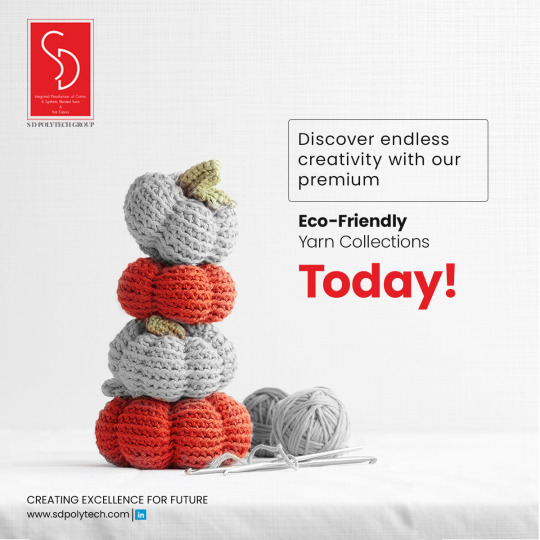
Resistance to Wrinkles and Shrinkage
In a country with diverse climates like India, resistance to wrinkles and shrinkage is paramount. Spun polyester yarn provides textiles with excellent shape retention, making it well-suited for garments that need to withstand varying environmental conditions. This resistance enhances the overall appearance and wearability of the final product.
Cost-Effective Manufacturing
Efficiency and cost-effectiveness are key considerations for textile manufacturers. Spun polyester yarn producers in India like SD Polytech, align with these priorities. Its availability in bulk quantities and the ability to integrate seamlessly into modern manufacturing processes contribute to streamlined production, minimizing costs without compromising on quality.
Environmental Sustainability
As environmental consciousness grows, Spun Polyester Yarn's eco-friendly attributes become increasingly significant. Its production process consumes less water compared to natural fibers, and its durability reduces the frequency of replacements, contributing to a more sustainable and eco-conscious textile industry.
Conclusion
In essence, the prevalence of Spun Polyester Yarn in the textile industry in India can be attributed to its exceptional strength, versatility, color retention, resistance to wrinkles, and cost-effective manufacturing. SD Polytech and other spun polyester yarn producers in India play a crucial role in weaving success for textile manufacturers, providing them with a thread of excellence that strengthens the fabric of India's rich textile heritage.
Also, Read:
The Advantages of Using Polycotton Knitted Yarns in Textile Manufacturing
The Rise of Yarn Manufacturing in India: A Historical Perspective
Originally Published by: https://sdpolytech.blogspot.com/
2 notes
·
View notes